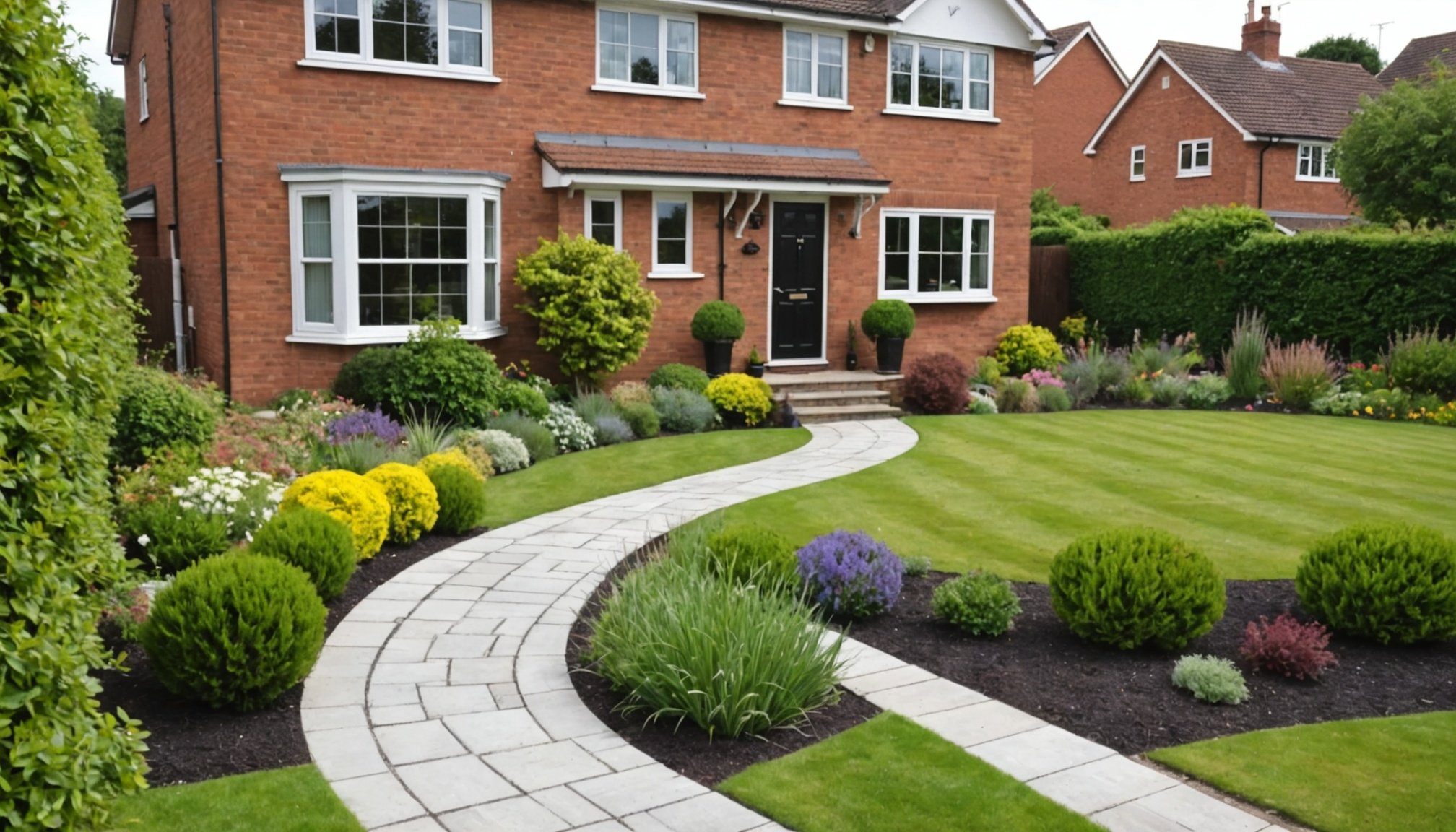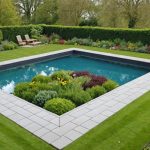Understanding Low-Maintenance Landscaping
Low-maintenance landscaping offers UK homeowners a blend of practicality and aesthetics. By focusing on elegant garden principles, your front yard can become a welcoming sight without demanding excessive upkeep. These principles emphasise simplicity and effectiveness, factoring in the climate and available resources.
When considering UK front yard design, selecting the right climate-adapted plants is crucial. Opting for native species means they are already suited to local weather patterns, reducing the need for constant care. Native plants tend to be more resilient and capable of thriving with minimal intervention.
Additional reading : Discover the Most Effective Draught-Exclusion Methods for UK Period Properties
Incorporating functional design is another essential aspect of low-maintenance landscaping. It involves arranging elements thoughtfully to reduce the effort required in upkeep. For example, using ground cover plants can effectively suppress weeds and decrease mowing frequency. Think of gravel or bark mulch for paths; they not only look elegant but also prevent weed growth.
Bear in mind the benefits: saving time, reducing water consumption, and the overall ease of maintaining your garden. Simple changes can have a significant impact, leaving more time for enjoyment rather than chores. Transform your front yard into a sanctuary that’s easy to love and care for.
Topic to read : Discover the Best Smart Lock Brands for Your UK Door: A Compatibility Guide
Plant Recommendations for a Beautiful Yet Effortless Yard
Creating a stunning garden that requires minimal effort can be achieved by choosing the right low-maintenance plants tailored to the UK climate. These considerations offer sustainable gardening solutions that appeal to both time-strapped individuals and eco-conscious enthusiasts.
Hardy Perennials
Hardy perennials are a fantastic choice for those seeking effortless gardening. These plants, once established, require less attention. In the UK climate, options such as lavender and sedum thrive and rebloom annually, reducing the need for replanting. Their resilience to poor weather conditions makes them an excellent choice for amateur and seasoned gardeners alike.
Evergreen Shrubs
Evergreen shrubs provide year-round appeal and are the foundation of sustainable gardening. Plants like holly and boxwood maintain their foliage, offering consistent greenery throughout the seasons. They are not only visually pleasing but also serve as integral privacy screens or windbreaks, contributing to a more sustainable garden environment.
Decorative Grasses
Decorative grasses can introduce texture and movement to any yard. Grasses like miscanthus and blue fescue demand minimal care and thrive in the UK climate. These grasses add height and subtle elegance to gardens, making for an attractive yet low-maintenance landscape feature. By incorporating them, gardeners can enjoy the dynamics they provide all year round.
Smart Landscaping Techniques
Incorporating effective landscaping techniques into your garden is essential for creating a space that balances beauty with functionality. A well-thought-out garden layout not only enhances aesthetic appeal but also simplifies maintenance. By planning the layout strategically, you can ensure that plants are easily accessible and that pathways are manageable, reducing the time and effort needed for upkeep.
A practical approach is to integrate hardscaping elements, such as stone paths or gravel areas. These features can significantly reduce the traditional lawn area, leading to easier maintenance and water efficiency. Hardscaping also adds a durable layer to your garden design, providing structure and visual interest.
Another key consideration is proper soil management. Soil quality directly impacts plant health and growth. Regularly testing soil and amending it with the necessary nutrients can lead to more vigorous plants. Additionally, understanding and implementing rain drainage systems can prevent waterlogging, ensuring that plants thrive even during heavy rainfall. Aligning these elements with efficient garden design principles aids in creating an enjoyable and sustainable landscape.
Practical Maintenance Tips
Keeping a garden in top shape without immense effort is entirely feasible with the right maintenance strategy. A well-structured schedule can simplify seasonal care.
Seasonal Garden Maintenance Tasks
Adopting a structured schedule not only helps maintain your garden but also optimises the time and resources spent. Consider dividing the year into four seasons and aligning tasks accordingly. Spring could involve planting and soil preparation, while summer focuses on watering and pest control. Autumn might be perfect for fertilising and pruning, while winter is ideal for protective coverings and dormant care.
Efficient Watering Methods
Reducing effort with watering requires strategic approaches. Drip irrigation systems are efficient, as they deliver water directly to the root zone, minimising wastage. Additionally, install rain barrels to capture and use rainwater, being both resourceful and eco-friendly.
Mulch and Ground Cover for Weed Management
Combat weeds with mulch and ground covers to ensure easy upkeep. Organic mulches like bark or straw prevent sunlight from reaching weed seeds, inhibiting their growth. Ground covers, such as creeping thyme or clover, not only fill in bare areas but also provide a barrier against potential weed invasions.
Visual Inspiration and Examples
Seeking garden design inspiration can transform your yard into an elegant and manageable space. By exploring visual guides, you can draw ideas and stimulate creativity, leading to a well-executed design.
Case Studies of Successful Low-Maintenance Yards
Consider UK homeowners who have successfully crafted low-maintenance yards. Their gardens serve as perfect examples of how strategic planning and plant selection reduce upkeep while enhancing beauty. Imagine a previously plain lawn evolving into a lush oasis with just a few clever planting choices and water-conserving techniques.
Design Mood Boards
Design mood boards are invaluable when planning an elegant yard. They compile textures, colours, and materials, guiding you in creating cohesive outdoor spaces. A mood board could mix soft greens with natural stone, promising a serene atmosphere.
Before and After Transformations
Witness the impact of smart design choices through before and after transformations. These visual guides demonstrate dramatic improvements while maintaining simplicity. From integrating native plants to using decorative stone pathways, these transformations highlight tactical decisions that ensure your garden flourishes with minimal effort. Such examples inspire homeowners to reimagine their yards as sustainable, beautiful extensions of their homes.
Sustainable Practices in Low-Maintenance Gardening
Incorporating sustainable gardening techniques can significantly ease garden maintenance while promoting ecological health. One of the most effective methods is using native plants; these species naturally adapt to local climates and soil conditions, reducing the need for excessive watering or soil amendments. Native plants not only support local wildlife but also promote an ecological balance that is crucial for long-term sustainability.
To further conserve water, gardeners can implement xeriscaping—a landscaping method that significantly reduces or eliminates the need for irrigation. This efficient resource strategy focuses on drought-tolerant plants and uses mulching techniques to retain soil moisture. By selecting plants that thrive in dry conditions and using mulch to shield them from evaporation, gardeners can substantially decrease water usage.
Lastly, composting is an invaluable practice for reducing waste and enriching garden soil. By recycling kitchen scraps and garden waste into nutrient-rich compost, not only does waste decrease, but soil quality also improves, reducing dependence on chemical fertilizers. Composting supports sustainable gardening by closing the nutrient loop and providing an eco-friendly avenue for waste reduction. Together, these practices form a comprehensive approach to maintaining a low-maintenance, environmentally responsible garden.
Budget Considerations for Front Yard Design
Designing a front yard on a budget doesn’t mean sacrificing style or function. With the right approach to budget gardening, it’s possible to create a charming space that doesn’t break the bank.
Cost-Effective Plant Choices
Choosing the right plants is crucial for any cost-effective design. Opt for native plants that naturally thrive in your climate, requiring less water and maintenance. Perennials are a wise investment as they return year after year, reducing annual planting costs. Look for budget gardening sales or local plant swaps to acquire them affordably.
DIY Landscaping Ideas
Engaging in DIY landscaping can significantly cut costs. Creating your pathway using gravel or recycled materials, for instance, can offer texture and function. Building raised beds with reclaimed wood is another practical solution. These options not only save money but give your yard a personal touch reflecting your creativity.
Long-Term Value of Low-Maintenance Designs
Investing in low-maintenance designs means long-term savings. Consider hardscaping elements, such as patios made from durable, recycled materials, which require minimal upkeep. Efficient, drip-irrigation systems are another sound financial planning choice, as they conserve water while keeping your garden lush. Emphasizing low maintenance ensures that your garden not only looks good now but remains beautiful without constant investment.











